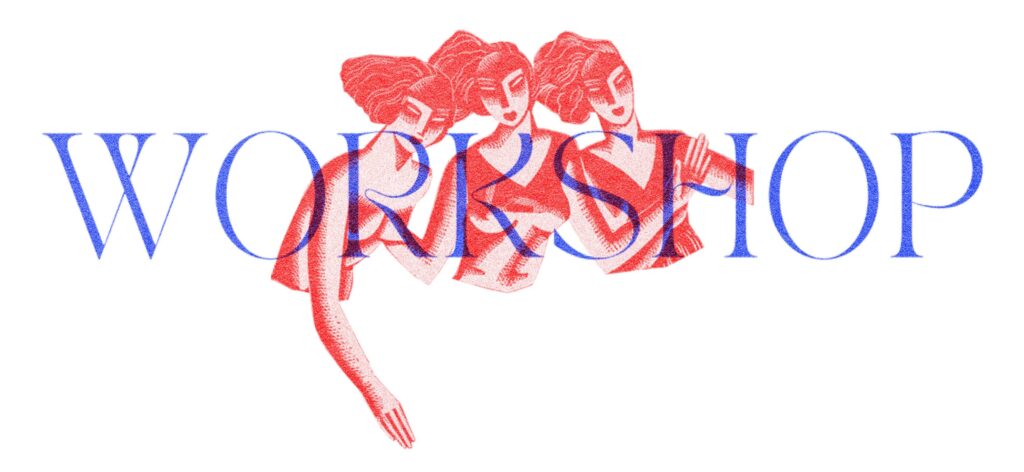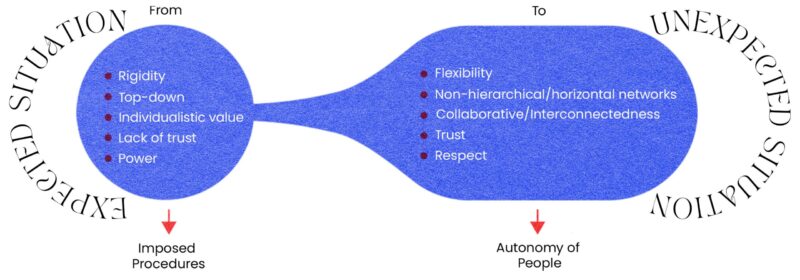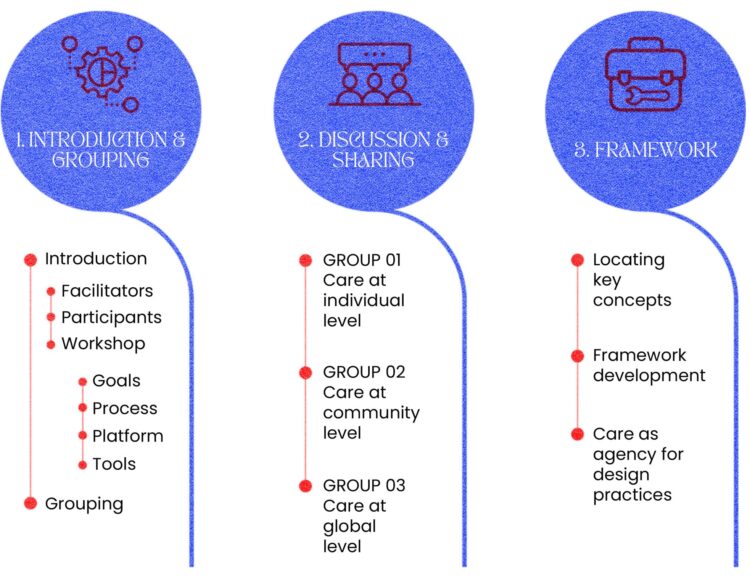

The shadow of patriarchy goes beyond the mere domination of men over women. Patriarchal culture, ruled by male individualistic values, gives rise to emotions that display mistrust and a hunger for power to take control over humans and nature. These elements surface up in most post-modernist design approaches that are based on the capitalist agenda and destructive ways of mass production and consumption.
Recently, several theorists and scholars have argued for the need to re-think the meaning and purpose of design that promotes the notion of care towards diverse forms of life and forms of design that focus on interconnectedness and interdependence, fluidity, respect, and collaboration. Aspects embedded within the matristic way of life and asserted to be of feminine values; and in the design field, aspects that are mainly established in theoretical and rhetorical discourses but hardly in praxis.
Understanding how care permeates the construction of social entities expands and enriches the social resources needed to build upon collectivity. Caring is an essential aspect of everyday life and is necessary for the existence of human life and possesses the potential to act as an agency to inform critical design theories and practices. Furthermore, the notion of care can confront neoliberal individualism and to find agency as a directing synergy by redefining moral frameworks, forms or organizing and governing, increasing the understanding and potentializing the continual creation of the site where care can emerge, and relations can be fostered.


Through this workshop, participants will explore how ‘care’ may promote and prototype a better model for citizen participation through participatory, inclusive, interactive design activities. The workshop is divided into three parts: starting with the formation of three groups that will represent different scales (1) micro or at an individual level, (2) meso or at a community level, and (3) macro or at a global level; followed by a parallel discussion and a sharing session on how care could be used as agency to inform design practices and how this conceptual framework could respond to social issues. To attend this workshop, participants should share academic or professional interests related to gender studies and alternative design practice.
Before the workshop, registered participants can download reading and pre-workshop material here.
Please register to the workshop here!


We know that care permeates our everyday life. However, it can be hard to define it. We believe care is represented at different levels in the following examples. Starting with individual level: empathy and care. Empathy is the ability to understand and share other feelings and emotions. It is to be able to acknowledge another person and to feel and understand somebody else’s pain.
Moving on to the community level is an example from a group of women called ‘Las Patronas’ in Mexico (the figure in the middle). The context of why and why this group emerged is as follows: Mexico is the only Latin American country that borders the US. Therefore, it is the only path for Latin Americas to reach the US by land. Among the many issues around migration, mobility is one of them. Immigrants hope in ‘the beast’, a train that crosses Mexico. Las Patronas throw every day 300 meals within a gap of 15 minutes – while the train crosses their community – to the people traveling on the roof of the ´beast´, this practice of care has been acknowledged through human rights awards.
Continuing with a case within the community level, India certainly has more than one example demonstrating this scale. It is noticed that the most inclusive and innovative systems emerge in situations of crisis that are restricted by a limited number of resources. In early 2021, during a major Covid break out in India, most government-run and other formal systems in healthcare and other logistics sectors collapsed at the time of an unexpected situation of crisis. During this time, several informal, non-hierarchical systems (such as pooling for oxygen cylinders, plasma donation, and providing free food delivery to the doorstep of Covid patients) emerged that were formed by the people and for the people to support one another. These systems formed the backbone for the functioning of major cities in India and focused on ‘care’ rather than on the economic benefits of care. These systems were very spontaneous reactions to crisis, were context-specific and local in nature, and thus are not covered by any media, but through them, it is essential to recognize the agency arising from the notion of care.
Lastly, Malala Yousafzai is the case we identify that represents care on a global level. Yousafzai has dedicated her life to promote human rights and education equality for women.


